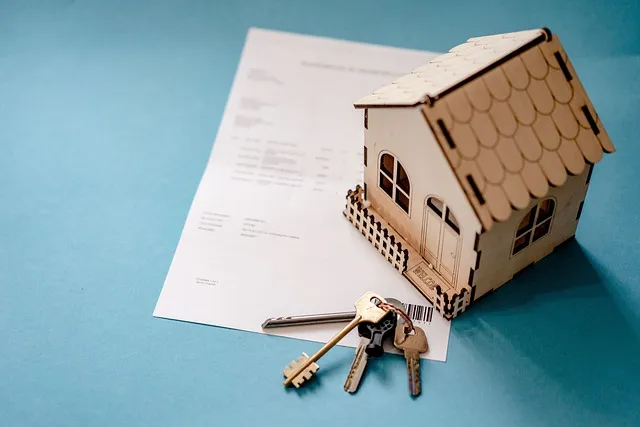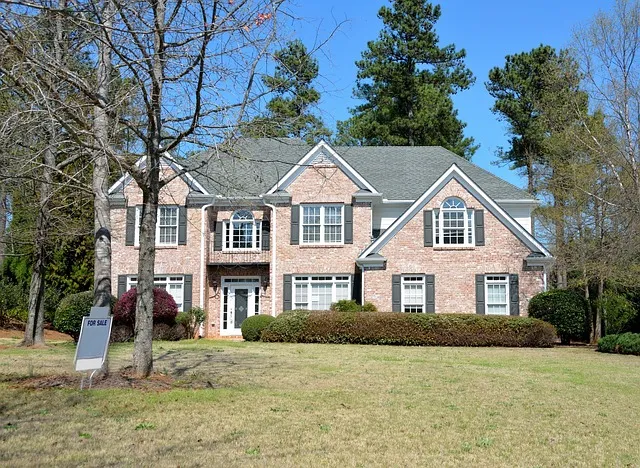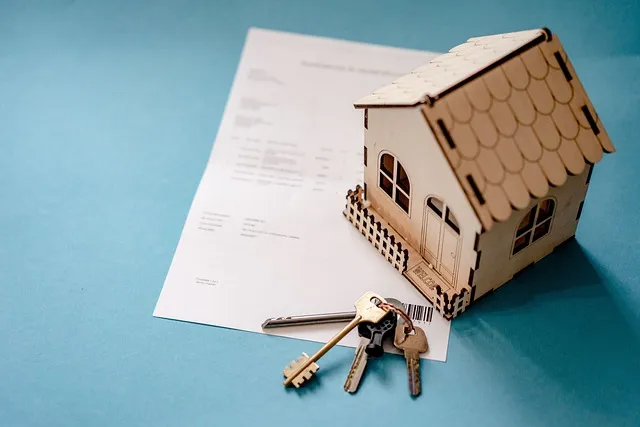Property and Casualty (P&C) Insurance is a critical component of risk management for commercial buildings, offering comprehensive financial protection against physical damage, loss, and liability. This insurance covers structures, fixtures, and equipment, safeguarding businesses from significant financial losses due to unforeseen events like fires, thefts, natural disasters, or visitor injuries. Effective risk assessment tailored to location and industry ensures business continuity, protects investments, and minimizes financial exposure by providing comprehensive coverage against diverse perils. A thorough understanding of policy nuances is essential for shopping the optimal balance between protection and premiums. Staying informed about trends and updates in P&C Insurance for Commercial Buildings is crucial for aligning with evolving market conditions and threats.
In today’s dynamic business landscape, safeguarding your commercial buildings against unforeseen risks is paramount. This comprehensive guide explores the intricacies of Property and Casualty Insurance (P&C) for Commercial Buildings, equipping you with essential knowledge to mitigate potential losses. From understanding basic coverage needs to navigating policy complexities, we delve into crucial aspects such as assessing risk, key policy components, and real-world case studies. By the end, you’ll be equipped to make informed decisions, ensuring your business is protected against a spectrum of perils.
Understanding Business Property Risk: The Essentials of Commercial Buildings Coverage

In the realm of business operations, understanding property risk is paramount, especially when it comes to commercial buildings. Property and Casualty Insurance for Commercial Buildings acts as a shield against unforeseen perils that can disrupt businesses and cause significant financial losses. This type of insurance coverage is designed to protect owners and operators from damage or destruction to their physical assets, including structures, fixtures, and equipment.
Essential components of commercial building coverage include protection against fire, vandalism, theft, natural disasters like earthquakes and floods, as well as liability for injuries sustained on the premises. It’s crucial for businesses to assess potential risks specific to their location and industry to ensure an adequate insurance policy is in place. By doing so, they can safeguard their investments, maintain business continuity, and mitigate financial exposure in the event of a covered loss.
What is Property and Casualty Insurance?

Property and Casualty (P&C) Insurance is a crucial component of risk management for commercial buildings and businesses. It offers financial protection against physical damage or loss to the property as well as liability coverage for any accidents or damages that may occur on the premises. For commercial building owners, P&C insurance is essential, as it shields them from significant financial burdens resulting from unforeseen events like fires, thefts, natural disasters, or personal injuries sustained by visitors.
This type of insurance policy typically covers the actual structure and its contents, providing a safety net for businesses against costly repairs or replacements. Moreover, it includes liability protection, ensuring that business owners are held accountable for any damages or injuries caused to third parties. By availing Property and Casualty Insurance for Commercial Buildings, businesses can safeguard their investments, maintain operational continuity, and mitigate potential financial risks associated with owning and managing commercial properties.
Types of Risks Covered by Business Property Insurance

Business Property Risk Coverage is a crucial aspect of property and casualty insurance for commercial buildings, offering protection against various perils that pose significant threats to business operations. This type of insurance is designed to safeguard the physical assets of businesses, including their structures, contents, and associated losses stemming from unforeseen events.
The scope of coverage includes protection against common risks such as fire, lightning, storms, floods, and earthquakes, which can cause extensive damage to commercial properties. Additionally, it extends to more specific risks like vandalism, theft, and civil unrest. Many policies also cover business interruption, ensuring financial stability during periods when operations are halted due to insured events. This is particularly valuable for businesses that rely on consistent revenue streams.
Assessing Your Commercial Building's Insurance Needs

When it comes to insuring your commercial building, a thorough assessment is key. Beyond simply determining the structure’s value, consider factors like its age, location, and unique features. These aspects significantly influence the types of risks your property faces—from natural disasters to theft or vandalism. Understanding these risks is essential for tailoring a robust Property and Casualty Insurance policy that offers comprehensive protection.
Assessing your building’s insurance needs involves evaluating potential perils and determining coverage limits accordingly. This process allows you to secure adequate protection against financial loss, ensuring peace of mind and business continuity. Remember, the right insurance policy should go beyond basic coverage, addressing specific risks unique to your commercial property, thereby providing comprehensive risk management for your investment.
Key Components of a Comprehensive Business Property Policy

When crafting a comprehensive business property policy, several critical components ensure that your commercial building and its contents are adequately protected. The first step is to identify the specific risks associated with your property type. This includes factors like location (nearby water sources, for instance), construction materials used in the building, and any environmental hazards. Understanding these risks allows insurance providers to tailor coverage accordingly.
A robust business property policy typically covers direct physical loss or damage to buildings and their contents, including equipment, inventory, and fixtures. It also includes provisions for additional living expenses if your business needs to relocate temporarily due to a covered event. Furthermore, some policies offer protection against theft, vandalism, and natural disasters like fire, hurricanes, or floods, which are common perils in Property and Casualty Insurance for Commercial Buildings.
Comparing Policies: Tips for Choosing the Right Coverage

When comparing business property risk coverage, understanding the nuances between different policies is crucial. As a business owner, evaluating your needs involves scrutinizing several key aspects. The first step is to assess the type and extent of risks specific to your commercial building. This includes factors like location, structure, and the nature of operations conducted within. For instance, properties in areas prone to natural disasters may require enhanced coverage for events like floods or earthquakes.
Next, delve into the policy’s scope of coverage. Look at what is included and excluded. Common considerations include protection against physical damage, business interruption, liability claims, and extra expenses incurred during repairs or relocation. Consider also the limits of coverage and deductibles, ensuring they align with your risk assessment. It’s beneficial to compare policies from different providers to find the best balance between comprehensive coverage and affordable premiums tailored to your commercial property and casualty insurance needs for your business.
Case Studies: Real-World Examples of Business Property Risk Coverage in Action

In the dynamic landscape of business, where risks are ever-present and unpredictable, having robust property and casualty insurance for commercial buildings is paramount. Real-world examples illustrate the critical role this coverage plays in safeguarding businesses against catastrophic events. Consider a case study of a tech startup housed in a modern office complex. A sudden fire breaks out in the server room due to faulty wiring, causing extensive damage to both the building and the company’s invaluable data. Thanks to comprehensive property insurance, the startup is able to cover the cost of rebuilding the damaged structure and replacing its critical operations infrastructure, ensuring minimal downtime and financial loss.
Another example involves a retail chain operating multiple stores across different cities. A severe storm hits, causing widespread damage to their brick-and-mortar locations. Their Property and Casualty Insurance for Commercial Buildings policy step in, providing funds for temporary repairs, inventory replacement, and even business interruption coverage, allowing the retailer to quickly recover and reopen its doors, minimizing long-term economic impacts. These scenarios underscore the indispensable nature of tailored commercial property insurance in managing risks and ensuring business continuity.
Common Mistakes to Avoid When Buying Business Property Insurance

When purchasing property insurance for your commercial building, avoid common pitfalls that many business owners fall into. One major mistake is underestimating the value of your assets; ensure you have comprehensive coverage that reflects the full replacement cost of your property and its contents. Don’t skip over optional endorsements; these add-ons can provide tailored protection for specific risks relevant to your business, such as data breaches or business interruption.
Another error is assuming all policies are created equal. Different insurers offer varying levels of coverage and exclusions. Thoroughly review the policy language and understand what’s covered and what isn’t. Neglecting to check the insurer’s financial stability is also risky; choose a reputable company with strong financial ratings to ensure claims can be paid if needed.
Staying Informed: Trends and Updates in Commercial Building Insurance

In today’s dynamic business landscape, staying informed about trends and updates in commercial building insurance is paramount for property owners and managers. The market for Property and Casualty Insurance for Commercial Buildings is constantly evolving, with new risks emerging and regulatory changes impacting coverage options. By keeping abreast of these developments, businesses can ensure they have adequate protection against potential losses. For instance, natural disasters like hurricanes and wildfires are becoming more frequent and severe, leading to increased demand for comprehensive coverage that accounts for these perils.
Additionally, technological advancements such as smart buildings and Internet of Things (IoT) devices introduce both opportunities and challenges. While these innovations can enhance operational efficiency and security, they also create new potential risks, including cyberattacks and data breaches. Insurance providers are responding by offering specialized policies tailored to address these emerging risks. Staying informed allows businesses to choose coverage that aligns with their unique needs, ensuring they remain resilient in the face of changing market conditions and evolving threats.
